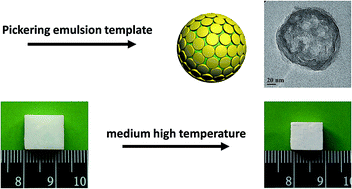“House-of-cards” structures in silicone rubber composites for superb anti-collapsing performance at medium high temperature†
Abstract
Ceramifiable polymer composites, especially silicone rubber composites, are widely used at elevated temperatures. These composites could convert into freestanding ceramified residues at temperatures above ∼1100 °C through eutectic reactions between the pyrolyzates of polymer matrices and ceramifying agents. However, it remains challenging for polymer composites to be used at the medium high temperatures (500–900 °C), because of the gap between the temperatures of polymer decomposition and the eutectic reaction. Here, we demonstrate that when the Laponite platelets in the preformed “house-of-cards” structure (Laponite-armored hollow composite particles, referred to as LHCPs) are used as fillers for silicone rubber, the resultant composites can well maintain their shape and mechanical strength in this critical temperature range as mentioned above. As revealed by microscopic and crystallographic studies, the superb anti-collapsing performance at medium high temperatures was indicated to stem from the “house-of-cards” structure of the LHCPs. These composites may find potential in some high temperature applications, for example, fire resistance cables, where both shape-maintenance and mechanical support at medium high temperatures are required in order to ensure electric supply in fire.


 Please wait while we load your content...
Please wait while we load your content...